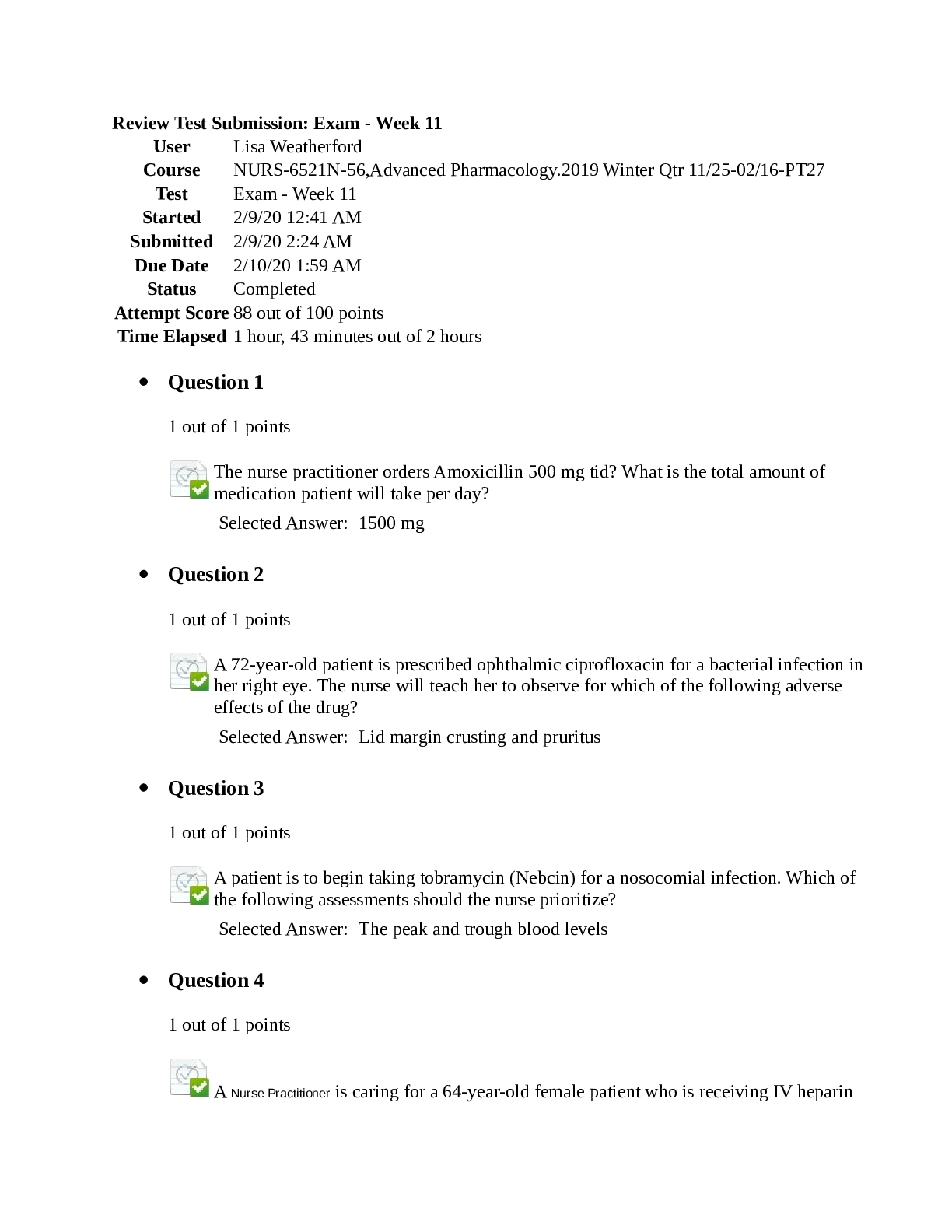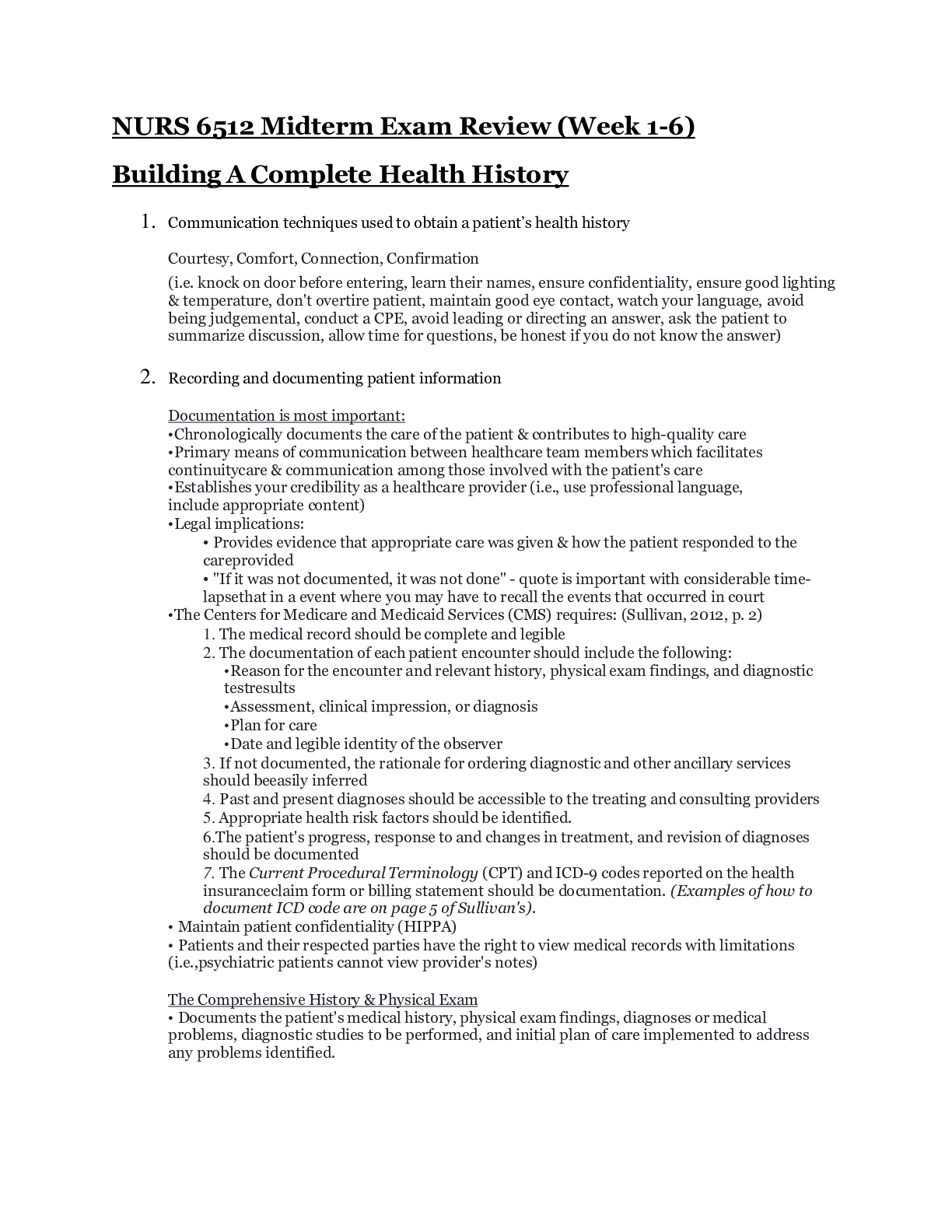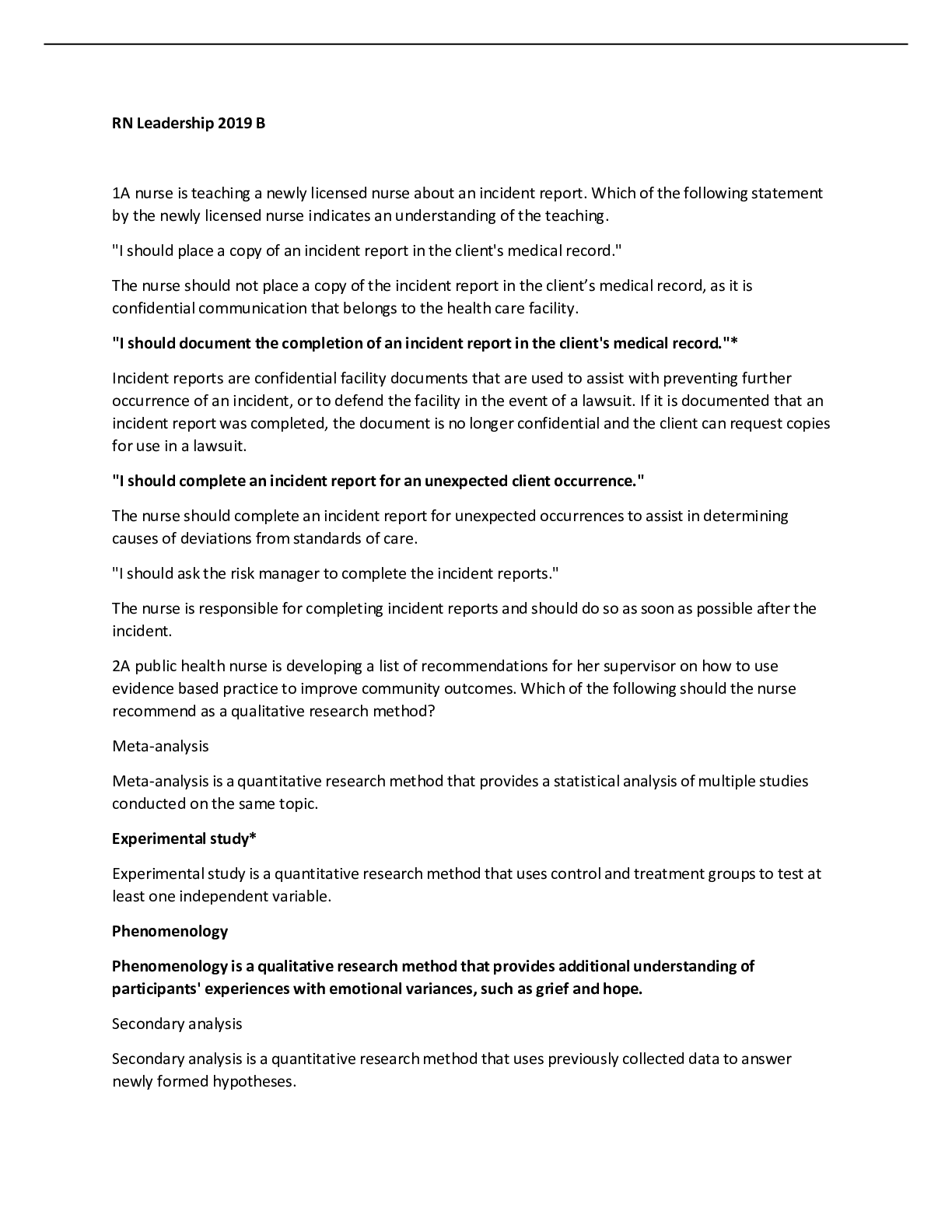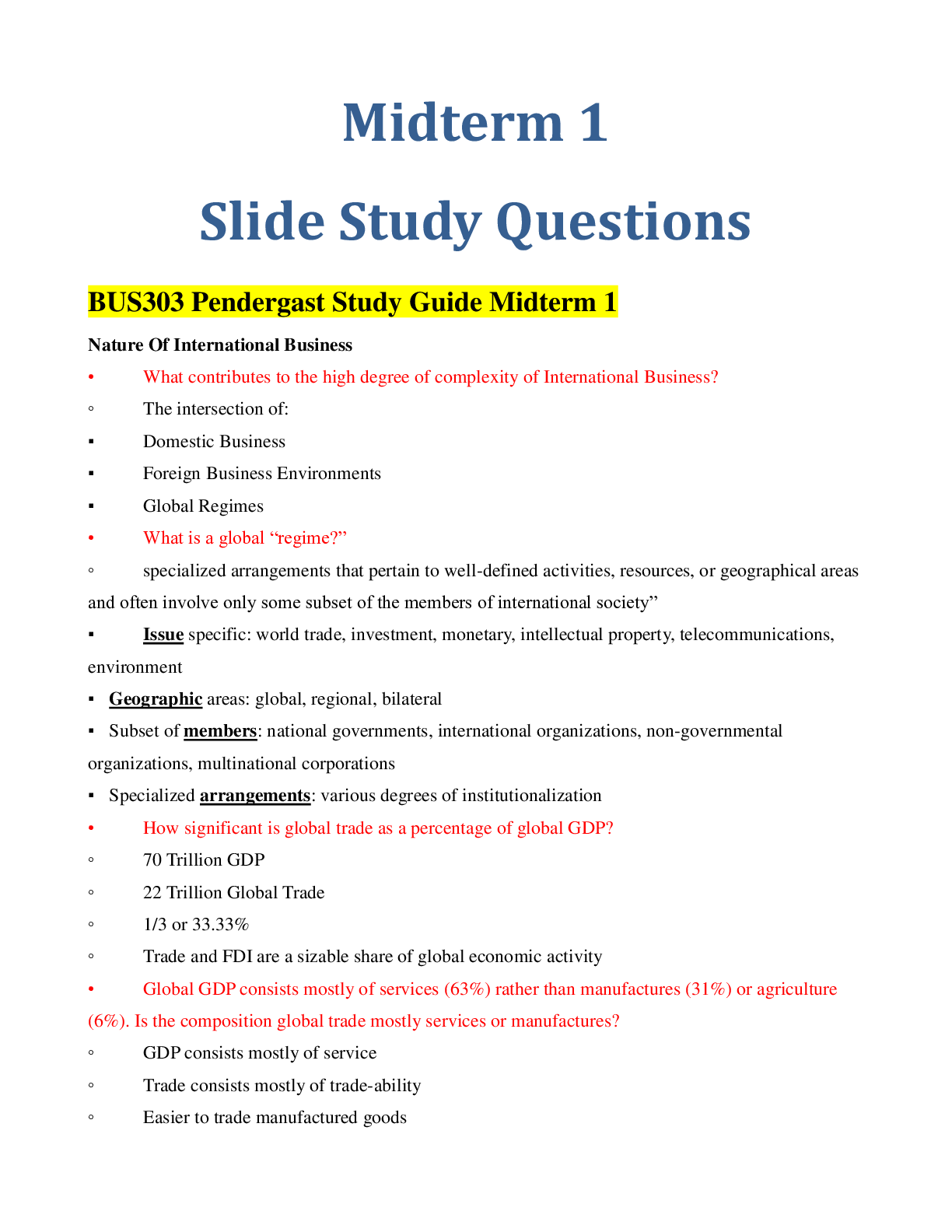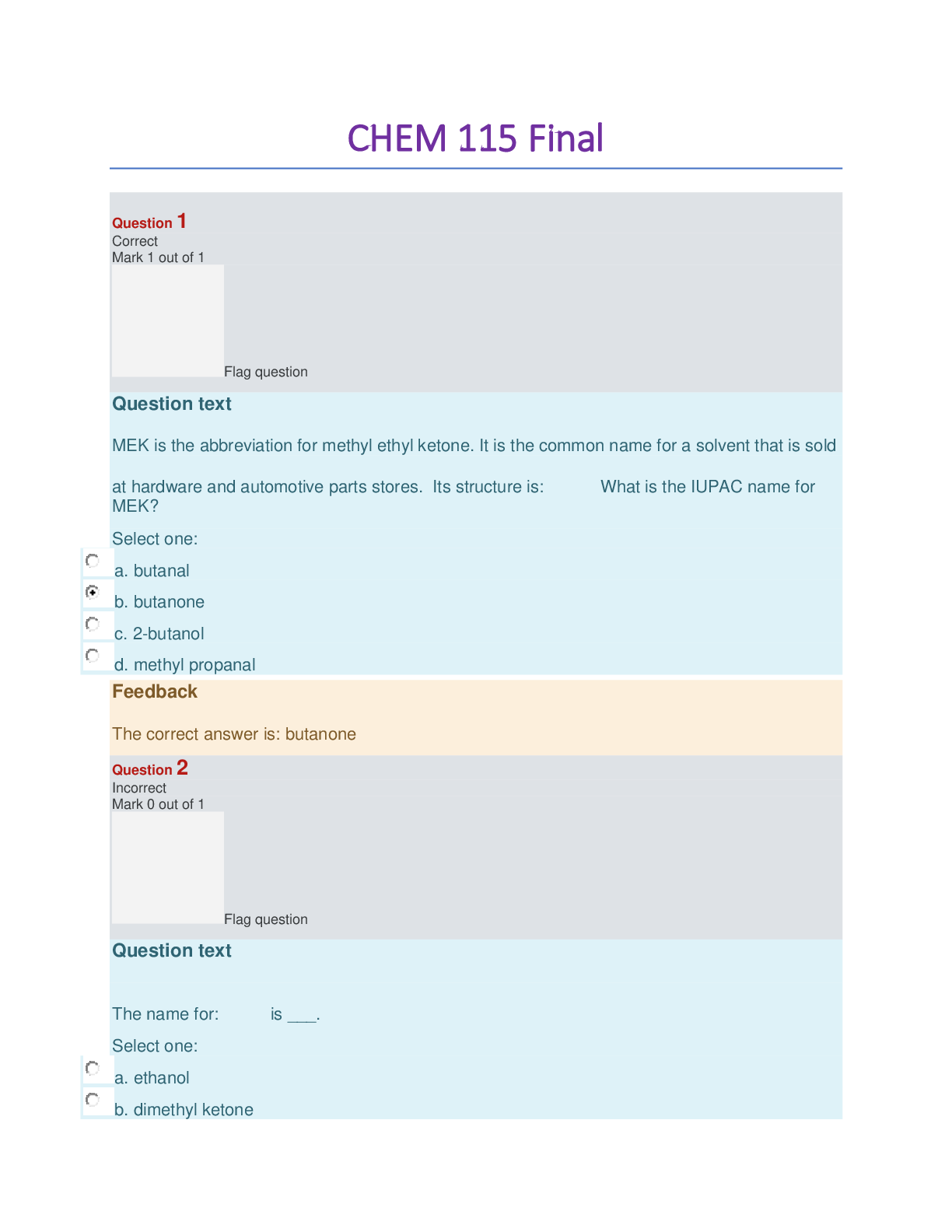*NURSING > EXAM REVIEW > NURS 3548 PEDS EXAM 2. QUESTIONS AND ANSWERS. LATEST 2020.A GRADED. (All)
NURS 3548 PEDS EXAM 2. QUESTIONS AND ANSWERS. LATEST 2020.A GRADED.
Document Content and Description Below
NURS 3548 PEDS EXAM 2. QUESTIONS AND ANSWERS. LATEST 2020.A GRADED. An infant has tetralogy of Fallot. In reviewing the record, what laboratory result should the nurse expect to be documented? An... swers: a. Increased platelet level b. Leukopenia c. Polycythemia d. Anemia Response Feedback: Persistent hypoxemia that occurs with tetralogy of Fallot stimulates erythropoiesis, which results in polycythemia, an increased number of red blood cells. • Question 2 2 out of 2 points What is the most profound complication of prolonged middle ear disorders? Answers: a. Loss of hearing b. Failure to thrive c. Visual impairment d. Tympanic membrane rupture • Question 3 2 out of 2 points A health care provider prescribes captopril (Capoten), 2.5 mg PO every 12 h for a child with heart failure. The medication label states: “Captopril 5 mg/5 ml.” The nurse prepares to administer one dose. How many milliliters will the nurse prepare to administer one dose? Fill in the blank. Record your answer using one decimal place. ____________2.5____ • Question 4 2 out of 2 points A 4-year-old girl is brought to the emergency department. She has a “froglike” croaking sound on inspiration, is agitated, and is drooling. She insists on sitting upright. The nurse should intervene in which manner? Answers: a. Notify the physician immediately and be prepared to assist with a tracheostomy or intubation. b. Make her lie down and rest quietly. c. Examine her oral pharynx and report to the physician. d. Auscultate her lungs and prepare for placement in a mist tent. Response Feedback: This child is exhibiting signs of respiratory distress and possible epiglottitis. Epiglottitis is always a medical emergency requiring antibiotics and airway support for treatment. Sitting up is the position that facilitates breathing in respiratory disease. The oral pharynx should not be visualized. If the epiglottis is inflamed, there is the potential for complete obstruction if it is irritated further. Although lung auscultation provides useful assessment information, a mist tent would not be beneficial for this child. Immediate medical evaluation and intervention are indicated. • Question 5 2 out of 2 points What child has a congenital heart defect with decreased pulmonary blood flow? Answers: a. An infant with patent ductus arteriosus b. A 2-month-old infant with tetralogy of Fallot c. A 6-month-old infant with repaired ventricular septal defect d. A 1-year-old infant with atrial septal defect Response Feedback: Tetralogy of Fallot is a cyanotic congenital heart defect. Patent ductus arteriosus, atrial septal defect, and ventricular septal defect are acyanotic congenital heart defects. [Show More]
Last updated: 2 years ago
Preview 1 out of 14 pages

Buy this document to get the full access instantly
Instant Download Access after purchase
Buy NowInstant download
We Accept:

Reviews( 0 )
$15.00
Can't find what you want? Try our AI powered Search
Document information
Connected school, study & course
About the document
Uploaded On
Nov 11, 2020
Number of pages
14
Written in
Additional information
This document has been written for:
Uploaded
Nov 11, 2020
Downloads
0
Views
123


.png)

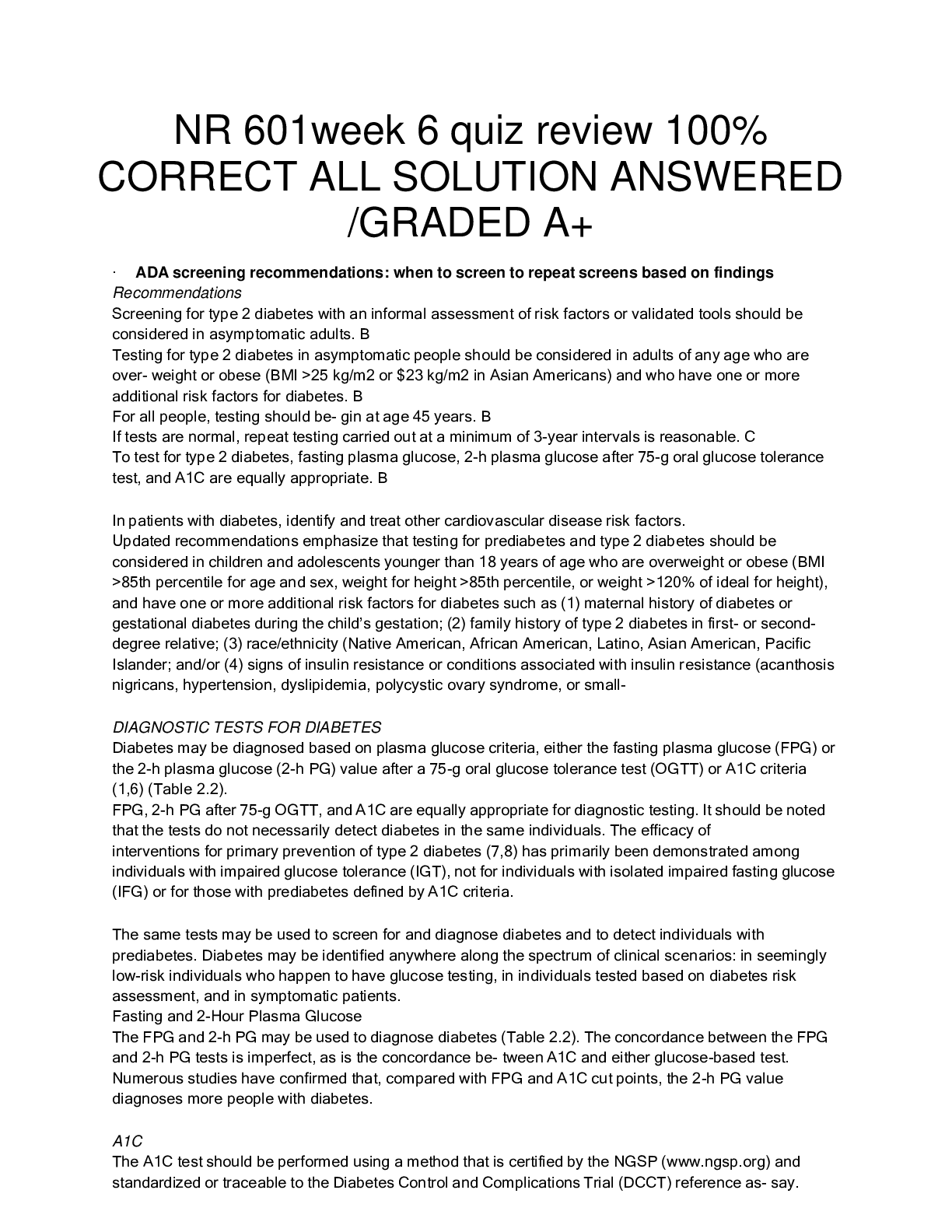
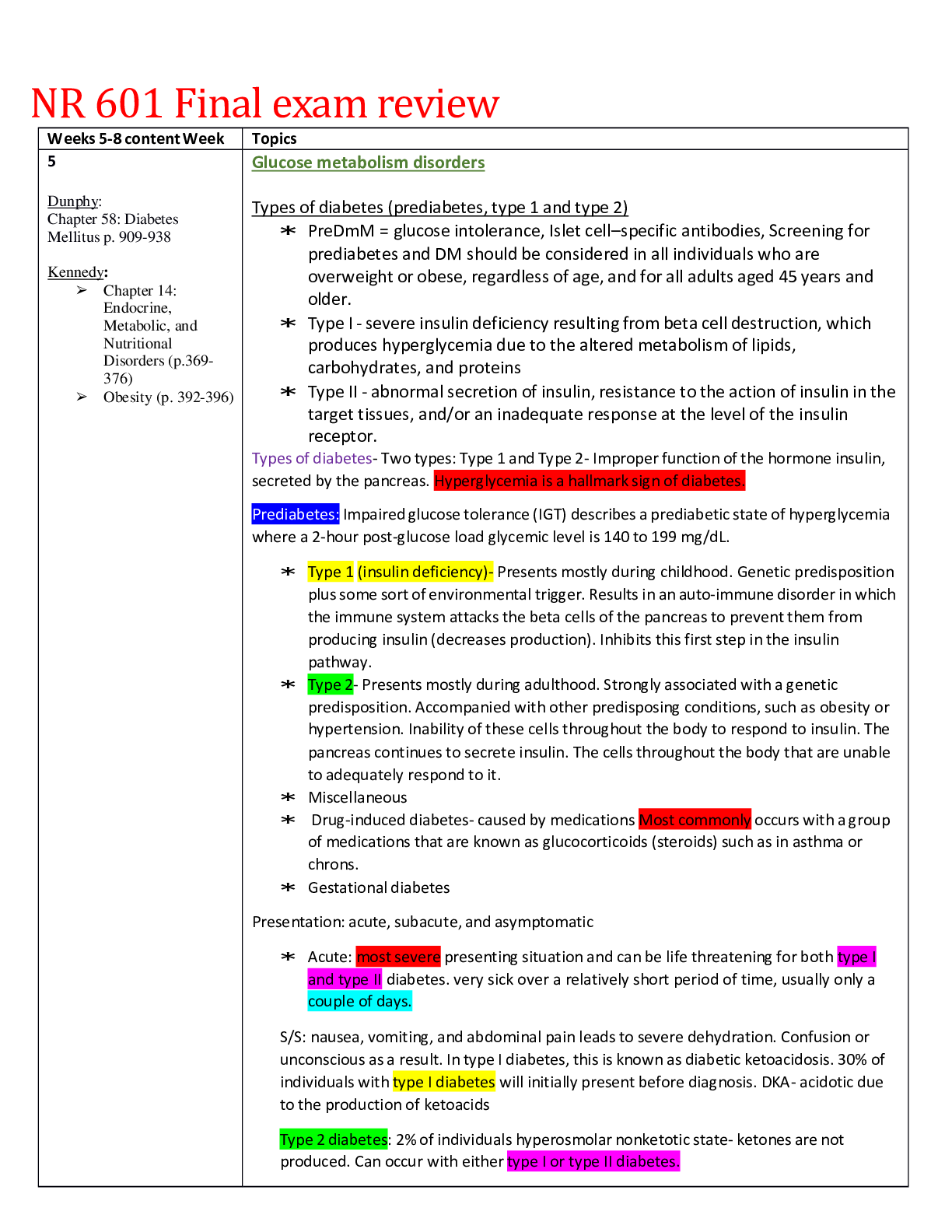

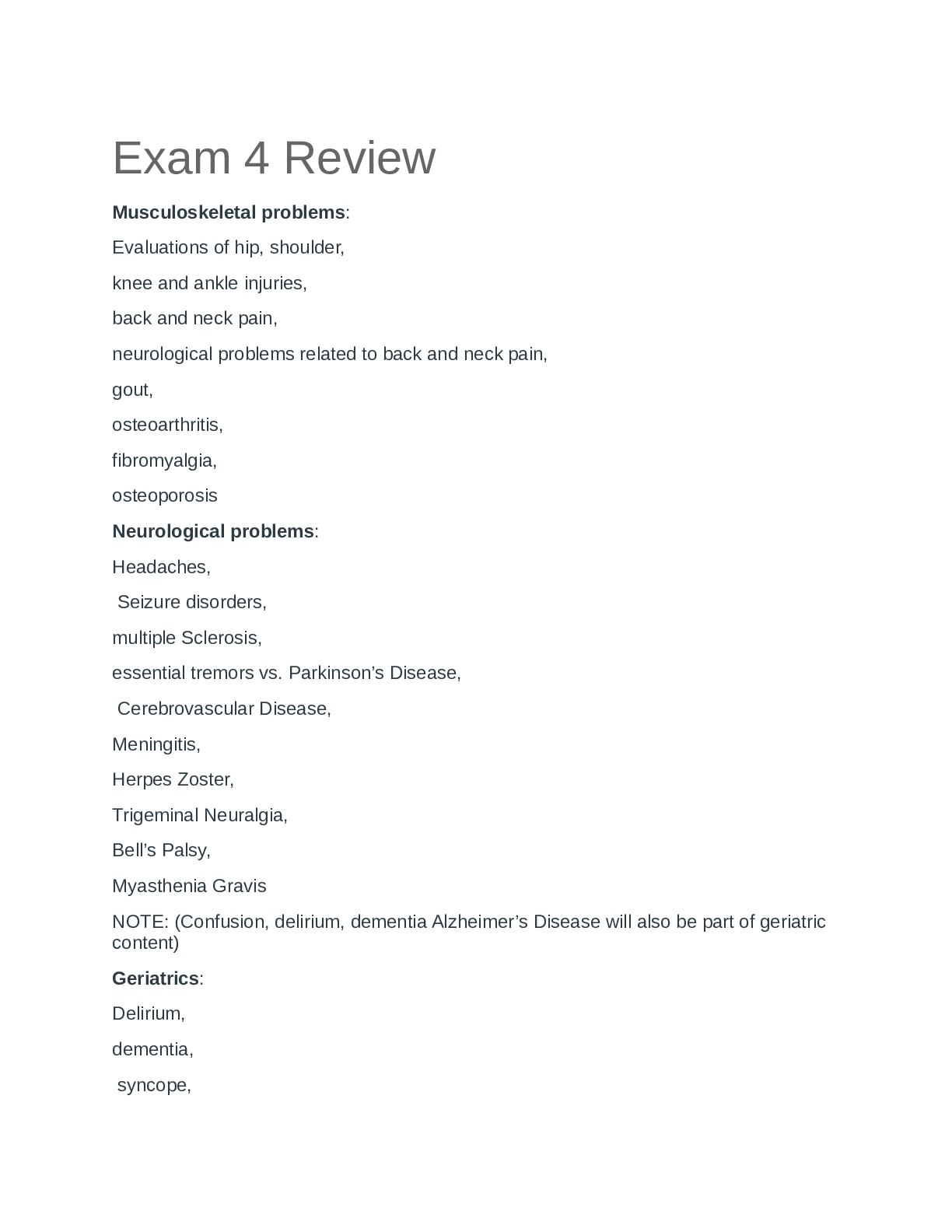
.png)

